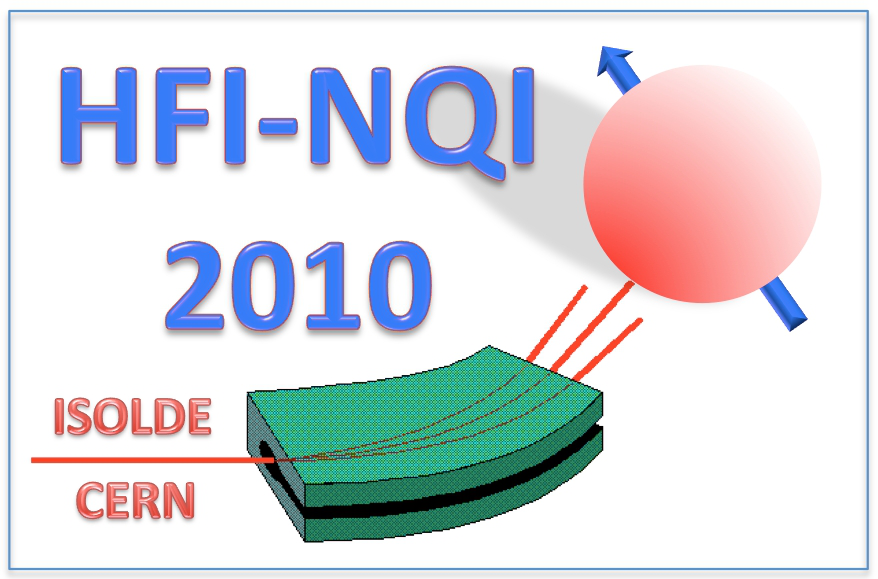Speaker
Prof.
J.M. Cadogan
(Department of Physics and Astronomy, University of Manitoba, Winnipeg, MB, R3T 2N2, Canada)
Description
Nanosized spinel-type ferrites are key materials for advancements in electronics, magnetic storage and ferrofluid technologies as well as bio-inspired applications. Magnesium ferrite, MgFe2O4, is an important member of the spinel family: apart from its extensive magnetic and electronic applications, it is used in heterogeneous catalysis and adsorption, and sensor technology. Mechanosynthesis is a powerful method for the production of novel, high-performance, and low-cost nanomaterials [1]. The evolution of nanocrystalline MgFe2O4 by high-energy milling a mixture of MgO and alpha-Fe2O3 has been investigated by Mössbauer spectroscopy and X-ray powder diffraction [2]. High resolution TEM has confirmed the ordered nature of the inner core of nanoparticles surrounded by a disordered surface shell/interface region as concluded from analyses of zero and applied field spectra [2]. Neutron diffraction measurements have been carried out (SPODI, FRM-II) on a series of 7 samples of MgO and alpha-Fe2O3 milled for periods of 0.25 h to 12 h. This has enabled details of the transformation of the initial crystalline MgO and Fe2O3 phases via intermediate states to the final nanocrystalline mechanosynthesised MgFe2O4 product to be investigated. A comparison of the findings from the complementary Mössbauer effect and neutron diffraction studies will be presented. References [1] V. V. Boldyrev, Russ. Chem. Rev. 75 (2006) 177. [2] V. Šepelák, A. Feldhoff, P. Heitjans, F. Krumeich, D. Menzel, F. J. Litterst, I. Bergmann, K. D. Becker, Chem. Mater., 18 (2006) 3057
Summary
The evolution of nanocrystalline MgFe2O4 by high-energy milling a mixture of MgO and alpha-Fe2O3 has been investigated by Mössbauer spectroscopy, Neutron and X-ray powder diffraction. This has enabled details of the transformation of the initial crystalline MgO and Fe2O3 phases via intermediate states to the final nanocrystalline mechanosynthesised MgFe2O4 product to be investigated.
| Are you a student, a delegate from developing countries or a participant with physical needs and would like to apply for a sponsored accomodation. Please answer with yes or no. | no |
|---|---|
| Please specify whether you would prefer an oral or poster contribution. | poster |
Author
Prof.
V. Sepelak
(Institute of Nanotechnology, Karlsruhe Institute of Technology, Germany)
Co-authors
Dr
A Feldhoff
(Institute of Physical Chemistry and Electrochemistry, Leibniz University Hannover, D-30167 Hannover, Germany)
Prof.
F.J. Litterst
(Institute of Condensed Matter Physics, Braunschweig University of Technology, D-38106 Braunschweig, Germany)
Dr
I Bergmann
(Volkswagen AG, D-38436 Wolfsburg, Germany)
Dr
J.L. Wang
(School of Physical, Environmental and Mathematical Sciences, The University of New South Wales, Australian Defence Force Academy, Canberra ACT 2600, Australia)
Prof.
J.M. Cadogan
(Department of Physics and Astronomy, University of Manitoba, Winnipeg, MB, R3T 2N2, Canada)
Dr
K.D. Becker
(Institute of Physical and Theoretical Chemistry, Braunschweig University of Technology, D-38106 Braunschweig, Germany)
Dr
M. Avdeev
(The Bragg Institute, ANSTO, Lucas Heights, NSW 2234 Australia)
Dr
M. Hoelzel
(Technische Universität München, ZWE, FRM-II, D-85747 Garching, Germany)
Dr
M. Hofmann
(Technische Universität München, ZWE, FRM-II, D-85747 Garching, Germany)
Prof.
S.J. Campbell
(School of Physical, Environmental and Mathematical Sciences, The University of New South Wales, Australian Defence Force Academy, Canberra ACT 2600, Australia)
